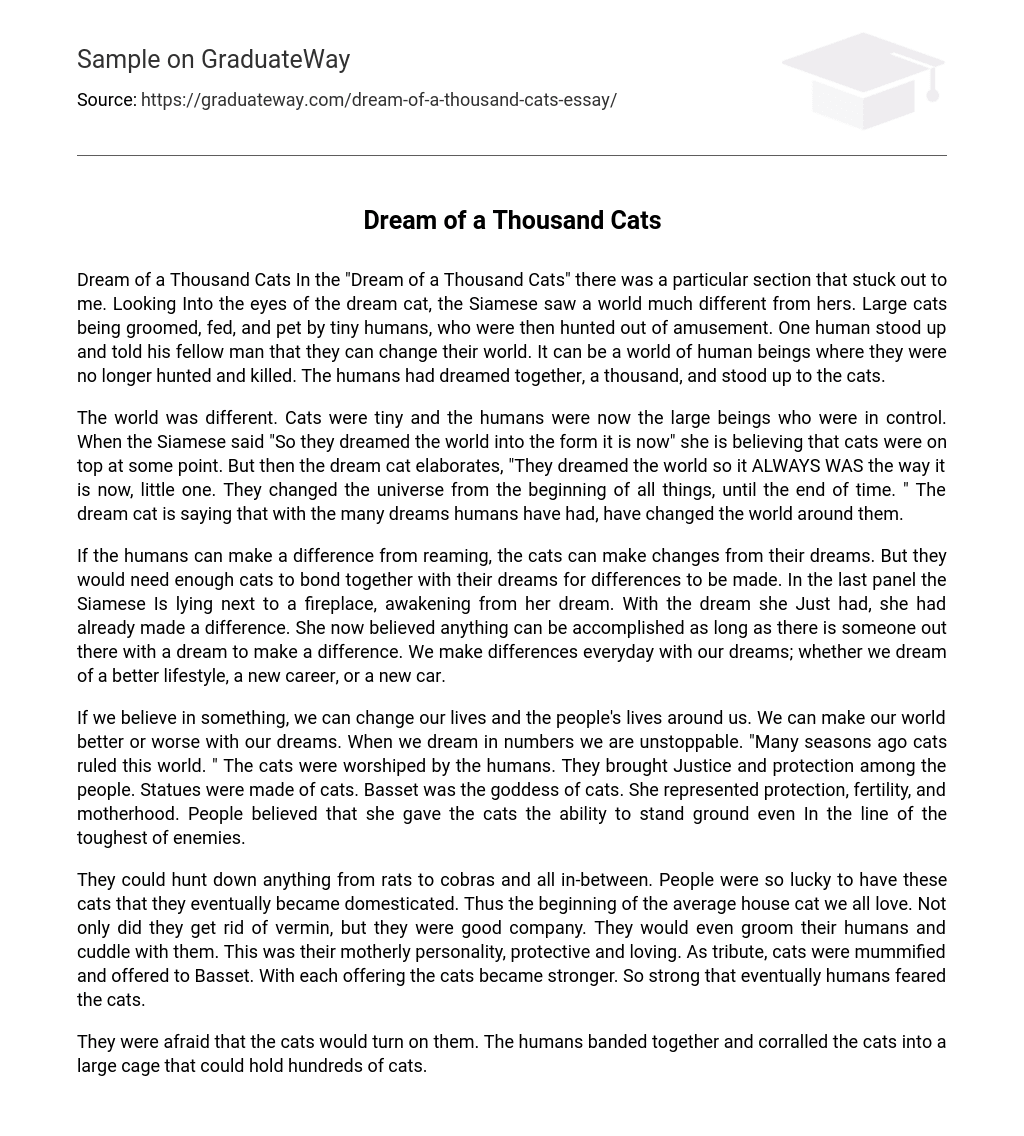While reading the “Dream of a Thousand Cats,” I was struck by a specific part. The Siamese cat gazed into the dream cat’s eyes and saw a world that was unlike her own. In this world, big cats were being pampered, fed, and petted by tiny humans, but then those humans were hunted for fun. A human stood up and informed his fellow people that they had the power to change their reality. They could create a world where humans were no longer hunted and murdered. Together, a thousand humans dreamt of this and stood up against the cats.
The world had undergone a drastic transformation. Cats had shrunk in size, and humans had assumed the role of dominant beings who governed everything. When the Siamese expressed her belief that cats were once in a superior position, she said, “So they dreamed the world into the form it is now.” However, the dream cat elucidates, “They dreamed the world so it ALWAYS WAS the way it is now, little one. They changed the universe from the beginning of all things, until the end of time.” The dream cat implies that the countless dreams of humans have constantly reshaped the world surrounding them.
The potential of dreams is not exclusive to humans; cats also have the ability to effect change through their dreams. However, for significant transformations to take place, a sufficient number of cats must come together with their dreams. In the final panel, there is a Siamese cat lying beside a cozy fireplace, awakening from her dream. Through this dream, she has already made an impact and now believes that anything can be achieved as long as someone out there possesses a dream to make a difference. Our dreams possess the power to bring about alterations in our everyday lives, whether we aspire for an improved lifestyle, a new profession, or even a fresh automobile.
Belief can transform our lives and those around us, enhancing or hindering our world. In the past, cats held dominance and were revered by humans who attributed qualities of justice and safeguarding to them. Statues were erected to honor cats, particularly Basset, the goddess of cats who symbolized protection, fertility, and motherhood. Cats were believed to possess the strength to remain steadfast in the face of formidable adversaries.
These cats were able to hunt various creatures, including rats, cobras, and everything in between, which made people appreciate their presence and led to their domestication. This marked the inception of the beloved average house cat. In addition to eliminating pests, cats also provided companionship, grooming humans, and offering cuddles. They exhibited a motherly nature characterized by protectiveness and affection. As a homage, cats were mummified and presented as offerings to Basset. With each offering, the cats grew more powerful. Eventually, humans started to fear these exceptionally strong felines.
A group of humans feared the cats and gathered them into a cage. They tossed rocks and berated the cats, claiming it was retribution for inciting fear. The cats were then lifted by numerous men and thrown into a fire pit, ultimately disappearing forever. Although still domesticated, the cats were no longer permitted to reside alongside humans. They depended on humans for sustenance, care, and affection. Consequently, the cats became street strays, longing for the day when they would once again be welcome.





